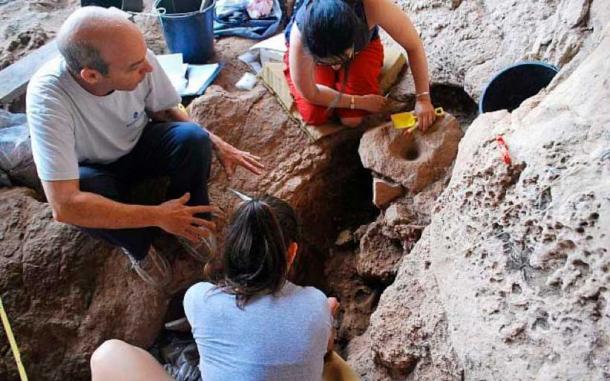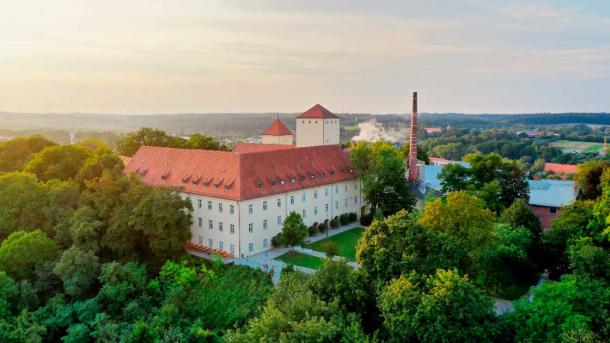
The Difference Between Lager and Ale Found in Irish Soil
The prehistoric yeast used in Europe’s first lagers has been discovered in Ireland. However, it wasn’t identified at an archaeological site, but in soil samples taken at an Irish university campus.
Before we get to the discovery of the ancient beer yeast in Ireland, let’s first go back in time and briefly look at the ancient origins of joy-juice, for the tipples of prehistory speak of geographical and sociological conditions, but also of cultural and religious peculiarities and differences. So when did people begin boozing?
A 2014 New York Times article titled “ How Beer Gave Us Civilization” explained that archaeologists excavating a prehistoric burial cave near Haifa, in modern-day Israel, found residue of “13,000-year-old wheat-and-barley-based alcohol (beer).” This suggests the making of alcoholic drinks “predated agriculture” and some researchers believe it was perhaps the desire for alcoholic drinks that resulted in agriculture and civilization.
- It’s Monkey Business! Human Desire For Alcohol Consumption Is Hardwired
- Would You Try This Ancient Liquor Found Inside 2,200-Year-Old Chinese Vessel?

Archaeologists excavating at the Raqefet Cave where evidence of the oldest beer in the world was discovered, August 2018. (Dani Nadel, University of Haifa)
Bavaria, The Official Home of Lager
Chemical analysis of jars discovered at the Neolithic village Jiahu, in the Henan province of northern China, shows that around 7000 BC people were drinking fermented beverages. A 2004 paper published in the Proceedings of the National Academy of Sciences found this drink contained “grapes, hawthorn berries, honey and rice,” and it was around this time cultures in the Middle East began making grape wine and barley beer.
For the ‘official’ starting point of lager brewing, however, we must look towards the Weihenstephan Abbey (Kloster Weihenstephan) Benedictine monastery in Weihenstephan, in Bavaria, the southernmost of the 16 states of the Federal Republic of Germany. The Brauerei Weihenstephan has been located at this monastery site since at least 1040 AD, and this is regarded as the world's oldest continuously operating brewery.
- The Strange and Wonderful World of Ancient Brews
- The Man Who Started The Illuminati and His Thwarted Promotion of The Enlightenment

Aerial view of the oldest beer brewery in the world, Weihenstephan, Freising, Bavaria, Germany. (aero-pictures.de/Adobe Stock)
This Is A First For Europe
According to Smithsonian Magazine, in the 1400s in Bavaria monks stored lager in cool alpine caves over the summer. The brewing of lager was then formalised in Bavaria over 500 years ago with the signing of the 1516 AD beer purity law, Reinheitsgebot, that stated beer could only be made with barley, hops and water (yeast was added later).
Lager brewing in Bavaria traditionally uses a species of yeast named “Saccharomyces pastorianus,” which is the allopolyploid yeast found in modern lager beer production worldwide. An article in New Scientist explains that this is the hybrid of two parents, “Saccharomyces cerevisiae and Saccharomyces eubayanus.” A 2018 paper by Dr José Paulo Sampaio found the largest share of the genetic diversity of S. eubayanus was located in South America, and until now strains of this species hadn't yet been found in Europe.
Now, scientists have discovered the lost ancestor of the yeast species necessary for the production of lager beer - in an Irish university campus.
Identifying The Ancient Yeast In Irish Soils
A team of researchers at University College Dublin, led by Professor Geraldine Butler, asked whether traces of S. eubayanus had ever been in Europe, and, if not, where the lager yeast S. pastorianus had come from? As part of undergraduate research projects to identify wild yeasts and sequence their genomes, the team of researchers took soil samples from the Belfield campus of University College Dublin from which they isolated two different S. eubayanus strains before isolating “S. eubayanus”.
The genome sequences of the two isolates showed a genetic relationship with the ancestral S. eubayanus strain, that according to the scientists “initially mated with S. cerevisiae to form S. pastorianus.” The researchers said their discovery of S. eubayanus in Ireland demonstrates that this yeast is “native to Europe” and that there were natural populations of the yeast in southern Germany in the Middle Ages, which provided the parents of the first lager yeast.
The Origins Of The Lost Lager Parent
According to RTE News lead author Professor Geraldine Butler said her students' discovery of S. eubayanus “is a fantastic example of research-led teaching.” The discovery of Saccharomyces eubayanus in Ireland offers “firm proof that the yeast is native to Europe and has possibly lived in other parts of the continent.” Furthermore, it also supports the idea that there were “natural populations of the yeast in southern Germany in the Middle Ages that initially provided the parents of the first lager yeast,” according to the researchers.
The earliest traces of S. eubayanus, however, were discovered in 2017 by archaeologist Dr. Alberto Perez when he was excavating a site in Temuco, Chile, just north of Patagonia. The remains of “1,000-year-old pottery” contained the strain of yeast and according to a CBC News report at that time, this discovery of “the lost parent of lager beer” suggests lager beer has its origins in South America, and not in Bavaria.
Top image: The parent yeast of all lager brewing has been found in Ireland. Source: Nitr/Adobe Stock
By Ashley Cowie
















Comments
They go on their whimsical wild goose theory chases. But just understand that ancient humanity, Atlantean era (pre-Ice Age) was a grain based civilization. Ancient humanity was a grain/malt and yeast based culture. Whole grain, protein-rich grains gave them both bread and beer, wine/vinegar, malted grain provided sugar, supplemented by fruits/leaf/roots, fish, milk, chicken/eggs, some hunted game, and the few young domestic animals (typically males) that had to be put down in the Spring (sacrifices to god). The curing of fish/meats was also part of it, but that’s a long story in itself. It really doesn't matter if the grain was wild or farmed. It reseeded itself.
Nobody gets paid to tell the truth.